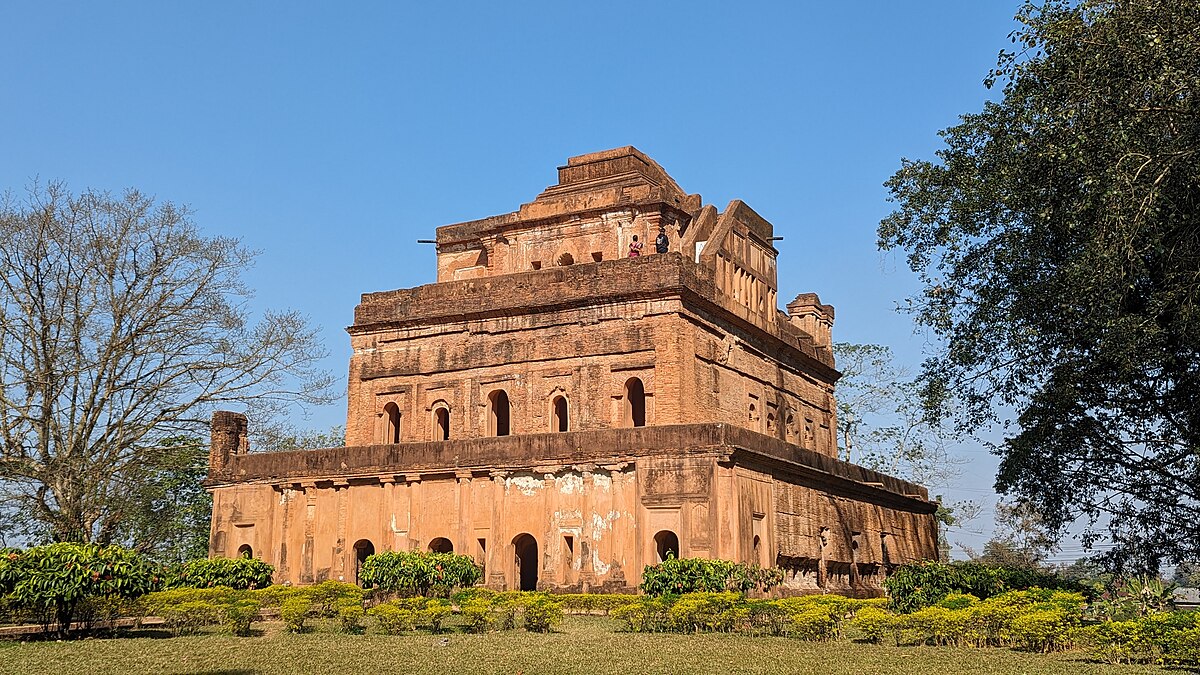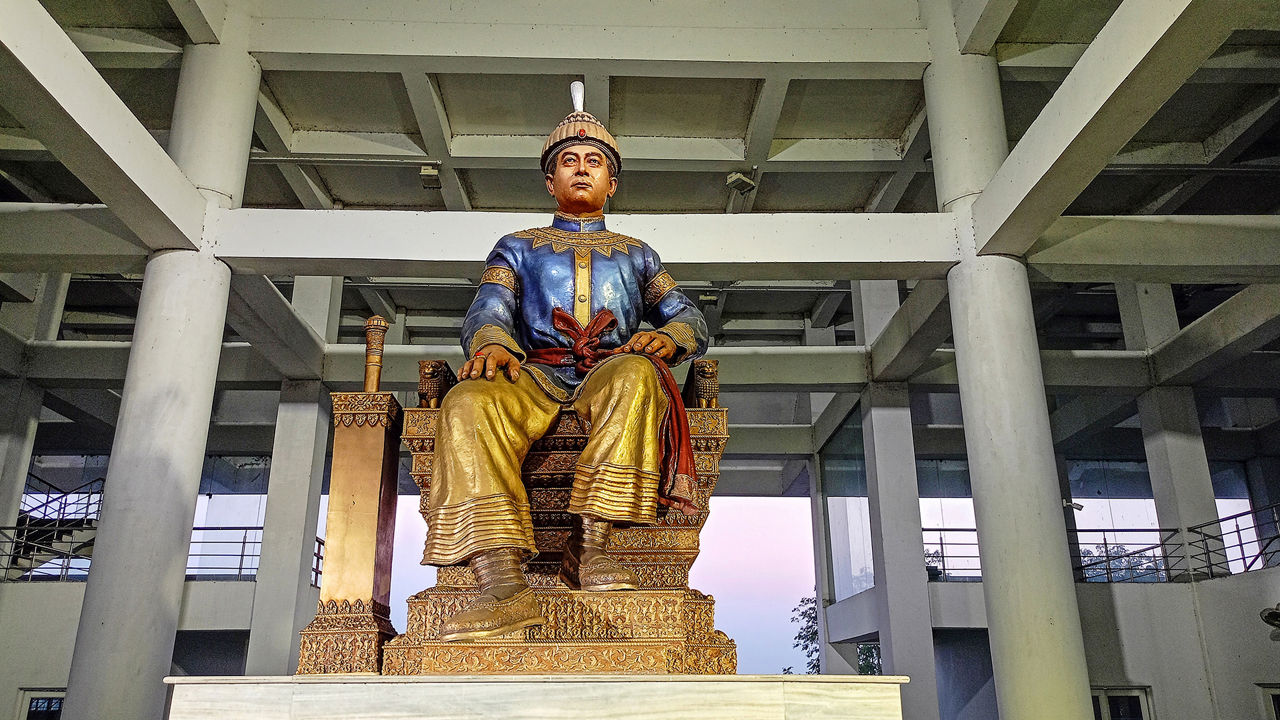The Ahom Ascent into Assam

"No two tigers live in the same jungle; no two kings sit on the same throne."
This proverb by Sukaphaa’s grandmother had an impact that lasted six centuries in India. This is due to the arrival of ‘The Crown Prince Sukaphaa’, who is the founder of the state of Assam, and he helped to build the foundation of the state and a kingdom that went on to exist from 1228 to 1826.
The Story before Assam
According to Ahom mythology, Chaolung Sukaphaa was the descendant of the celestial God, Khunlung, who came to rule on earth over Mong-Ri-Mong-Ra from heaven. This legend is also reflected in his name, ‘A tiger from Heaven’.
Mong-Ri-Mong-Ra was known as Mong Mao, and it was a Tai Kingdom in the Yunnan province of China. Sukaphaa’s uncle, King Pao Meo Pung, was the monarch during his younger days.
For the longest time, people of Mong Mao knew that Sukaphaa would be their ruler because no son was born to King Pung. This changed much later as an heir was finally born to King Pung. Therefore, Sukaphaa was advised by his grandmother, who helped to raise him, that it would be better that he finds another throne.
Sukaphaa’s historical legacy is evident in the Buranjis, which are the primary historical source of the Ahom Dynasty in India.
 His Journey into Assam
His Journey into Assam
You would think that King Sukaphaa was mostly accompanied by his family and a few of his generals and servants. But this large group involved three queens, two sons and a daughter. along with chiefs, religious members, a military force of 9,000 soldiers, several commoners. along with a procession of 300 horses and 2 elephants.
This journey to Assam took him 13 years, during which it is reported that he conquered several Naga states, that included the territories of northeastern India and northwestern Myanmar, and established his administration within these regions. He finally reached Namrup in Assam in December 1228 along the Brahmaputra valley, which made it an ideal location for settlement due its well-known fertile lands.
This time, however, he took a different approach in establishing his administration. By learning how to communicate with the local tribes, respecting their customs and living amongst them, and marrying into their community, enabled him to develop cordial bonds and win their cooperation.
His administration progressed through territories like Tipam, Abhoipur, Simaluguri among others within Assam before finally building his capital in Charaideo, which is near to what is currently known as Sivasagar town in the year 1253 and is therefore a significant location. He also introduced sali rice farms, which is the cultivation of winter of Kharif rice crop, a variety that is grown in several parts of Assam during the monsoon season.
Sukaphaa Divas, or Asom Divas (Assam Day), is held on December 2nd, to celebrate the King who is known as the architect of Assam.
 Ahom Administration and Military
Ahom Administration and Military
This kingdom was also known for its efficient ways of administration. The top decision makers was the King, who consulted with three ministers, who were called as Gohains. They advised the King on matters that involved the state and foreign issues. In addition, there were also local but high-ranking officials who collected revenue and enforced the law within their jurisdiction.
But what is more interesting about the Ahom administration that helped to establish unity among the people and economic growth, was the Paik System.
Here, all men between 16 to 50 had to serve the state, they were known as Paiks or foot soldiers, and a four of them in one unit was called as Got. They were further organised based on the family they came from and the skills they possessed. Within these four members, one or two of them worked for the state while the other two took care of the domestic work of the first two under military duty.
That’s why, the paiks consisted of two classes – soldiers and labourers. Kanri Paiks worked as labourers, but also gave their service as a soldier during battles when required. The paiks were also supervised by officers superior to them. So, what does all of this imply?
It indicates the strong administration and military nature of the Ahom Kingdom, which also went on to defeat the Mughals, especially in the Battle of Saraighat (1671) and the Battle of Itakhuli (1682), that prevented the Mughal expansion into the Northeast of India. They defeated them using diplomatic negotiations, guerrilla tactics, and psychological warfare. The natural terrain of the Ahom dynasty worked in their favour to conduct guerilla tactics since they knew the geographical terrain better than the Mughal army.
Besides this, they also strategically utilised their well-established naval power, which the Mughal army lacked since their earlier battles were majorly land-based and supposedly did not place much focus on their naval affairs.
 The Last Ahom Kingdom
The Last Ahom Kingdom
Just like with anything good in life, it meets its inevitable end. In the case of the Ahom Kingdom, several factors contributed towards its end. The Paik system, which helped with the defeat of multiple Mughal attacks became outdated. Then, the kingdom suffered as a result of its overburdened hierarchical system that at the time became weak and their economic resources decreased.
In addition to this, within the kingdom, the displaced princes of the Ahom dynasty, together with the followers of Mayamara Satra, who wanted to fight against the dominance and exploitation of the Ahom elite, led to the Moamoria rebellion that lasted from 1769 to 1805.
Later, internal conflicts that continued within Assam made it a target for the Burmese to invade, an attempt to expand their territory. Externally, beyond Assam, the British intervened by ensuring the signing of the Treaty of Yandaboo, in the year 1826 between them and the Burmese, which ended the First Anglo-Burmese War.
Finally, after this war, King Purandar Singha was appointed as a tributary ruler by the British East India Company and ruled during the period of five years, until the British took over his kingdom in the year 1838, making him the ruler of the last Ahom Kingdom.
Interested in exploring the capital of the Ahom Kingdom? You can visit it here.



